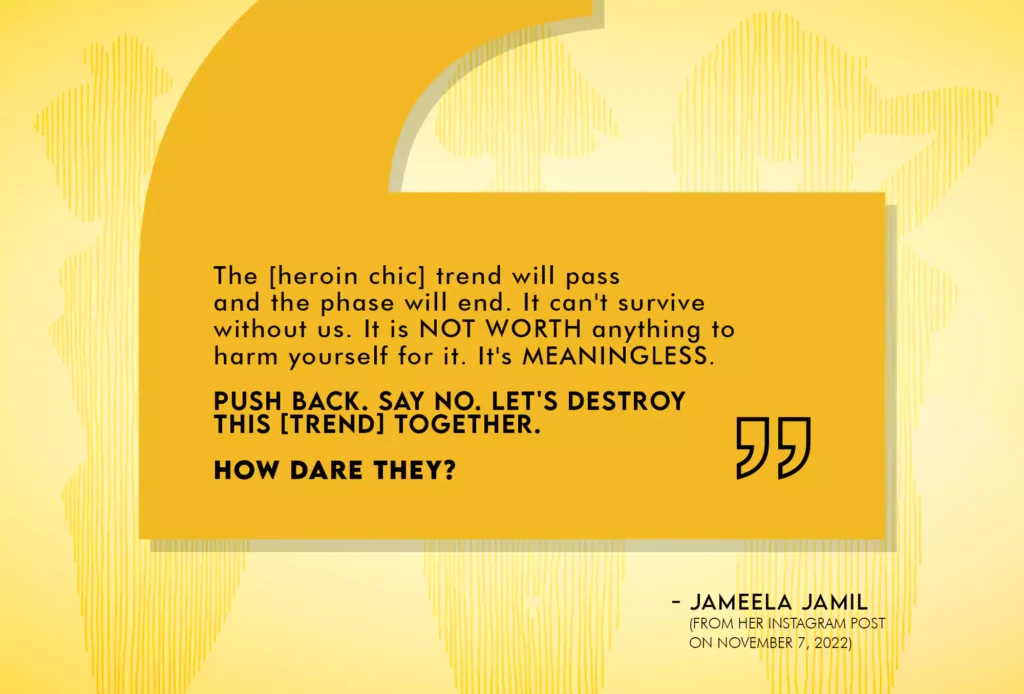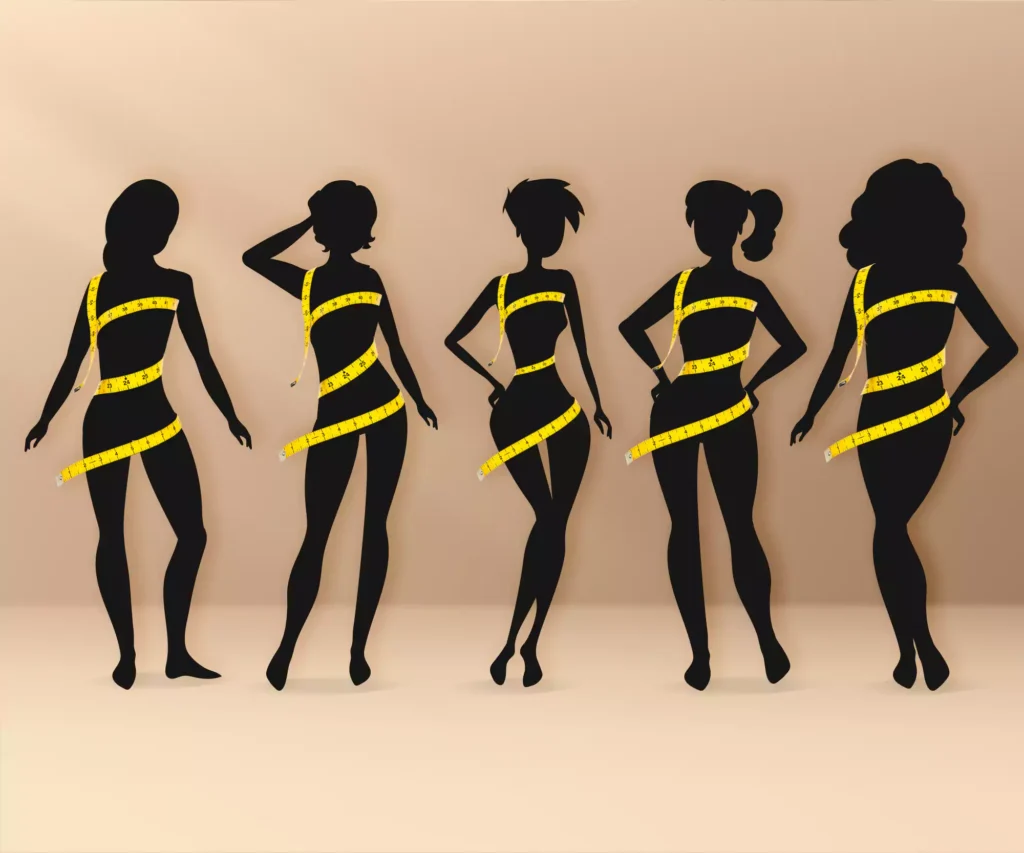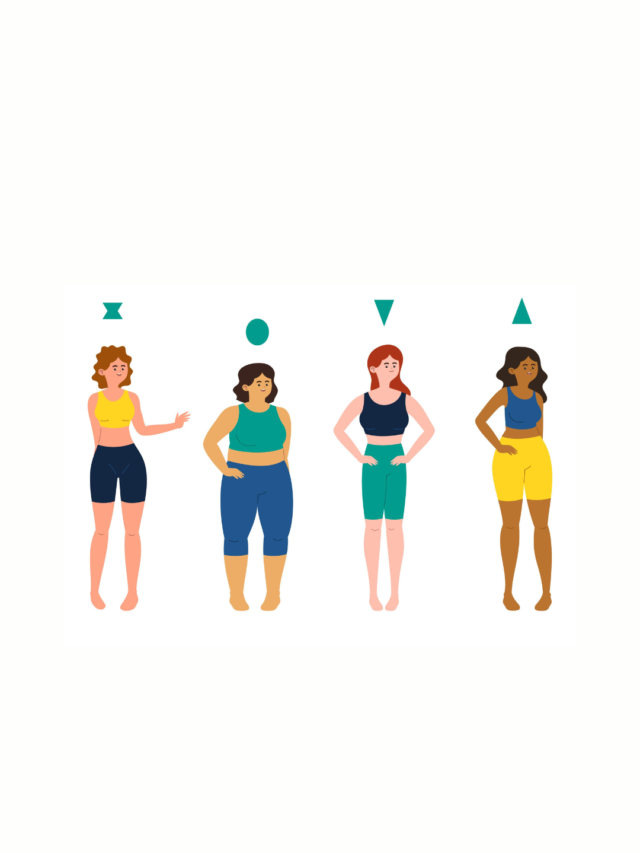Heroin chic is one of the many body trends in the fashion industry that have been regulating how women view their bodies. Affecting women across all age groups, these trends are known to influence teenagers the most, who are still learning to accept the drastic changes that puberty brings with it. In such a state, the media promoting unrealistic body and beauty standards affects young women on different levels:
- it negatively impacts their outlook towards health, and
- it leads to a gross misunderstanding that the female body ‘should’ fit an unrealistic mould.
Bye bye booty: Heroin chic is back https://t.co/D5yTMWQfWh pic.twitter.com/a7r4a6RzGv
— New York Post (@nypost) November 2, 2022
The female body as a fashion accessory
Remember the 1980s, the era of Supermodels, with women like Cindy Crawford, Naomi Campbell, Brooke Shields, and Princess Diana as popular faces in the industry? They looked athletic, vibrant, fresh, and strong. However, the decade yet to come had something else in store. The 90s is characterised by one of the sickest trends that the fashion industry ever glorified—heroin chic.
This trend is credited to having been started by the model Gia Carangi, who was heavily addicted to heroin and died of AIDS-related complications. The fashion industry turned this unfortunate aspect of her life into a trend and started capitalising on substance abuse. This trend glamourised insanely skinny bodies to the point that the models looked sick and as if they were addicted to the drug heroin. Exactly, that’s how heroin chic got its name!
Then came the roaring 2000s, when another trend, the Bombshell, replaced heroin chic. Two words—Victoria’s Secret. By the 2010s, curvaceous bodies were made famous by celebs like the Kardashians. In recent news, do you remember Kim Kardashian attempting to fit into Marilyn Monroe’s dress for Met Gala 2022, where she lost 16 pounds to fit into the gown while surviving on tomatoes for three weeks? With such a huge fan base and people looking up to them, these unhealthy habits must have significantly misled them.
The ‘ideal’ body type
Women’s bodies are constantly under the eye of scrutiny. Undoubtedly, the big names in the fashion industry are the ones who determine the ideal body type of any given era. Even though women started to fight for their own voice around the 1920s, these changing beauty standards limited them from rightfully expressing themselves. Clothes were no longer made to fit the person; the person would have to fit the clothes. After World War II, ideals became more conservative. This era saw the emergence of the all-American woman—Playboy, Barbie, Marilyn Monroe, etc. What was fashionable ten years ago becomes ugly ten years later. How can body dysmorphia not thrive in such a system?
On another level, entertainment programmes meant for children also uphold these unrealistic body expectations. From Cinderella (1950) to Frozen (2013), Disney princesses have impossibly narrow waists and tiny wrists. The big feet belong to ugly stepsisters; warts belong to the old witch. They could belong to different ethnicities, but all have the same body. It is sad to realise that entertainment carefully implants self-image issues in a girl’s mind at such a tender age!
Even though beauty standards vary from country to country, the larger narrative that emerges from the West primarily regulates them. This makes body dysmorphia—an universal issue—especially grave in the age of social media influencing.
These ever-changing demands and unhealthy standards are not limited to the female body. The male body goes through the same, to varying degrees. Men are expected to be muscular, reasonably tall, and have chiselled jawlines and six-pack abs. Manscaping and hairlessness have become more prevalent, and hairy bodies are considered comical for some absurd reason. The funny thing is men are expected to have all these but should not appear as trying too hard.

Is ‘heroin chic’ making a return?
There’s this new drug on the market—Wegovy (semaglutide). It is for those suffering from morbid obesity or chronic illnesses along with obesity. However, those who can afford it have already started misusing this drug to lose weight rapidly. You can even visit their site, which lists the many dangerous side effects of this injection. Just off the top of the list are cancer, vision problems, and depression.
Imagine the potential havoc that the misuse of this drug can wreak. We don’t know for sure because the research (as mentioned on the site) is still in its early stages. So, anyway, with the help of this drug, a new kind of body is emerging. Once again, substance abuse is becoming fashionable—a different substance, but still bad.
We like to equate fashion with art, and that does make sense. But how far are we willing to go to create ‘art for art’s sake’ with our bodies? What is the reason for objectifying the human body to the point where a destructive approach leads to deaths from substance abuse and eating disorders? We have come so far, and we know so much better now. Our bodies should not have to answer to faraway, vain influencers and their far-fetched notions. Between keeping us alive and fully functional, our bodies have a lot going on anyway. So let’s not make them fashion accessories.


